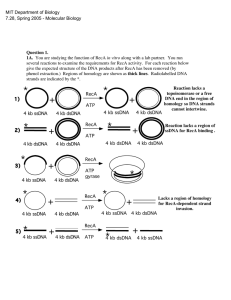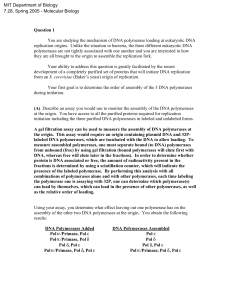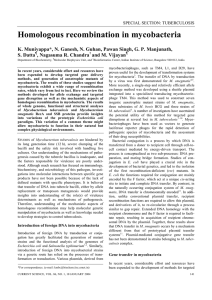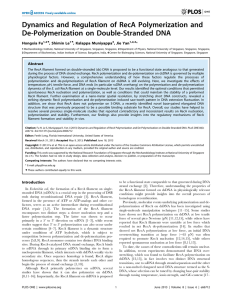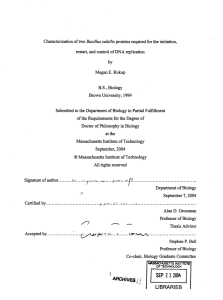FCH 532 Homework 6 and use diagrams/pictures to explain your answer.
advertisement
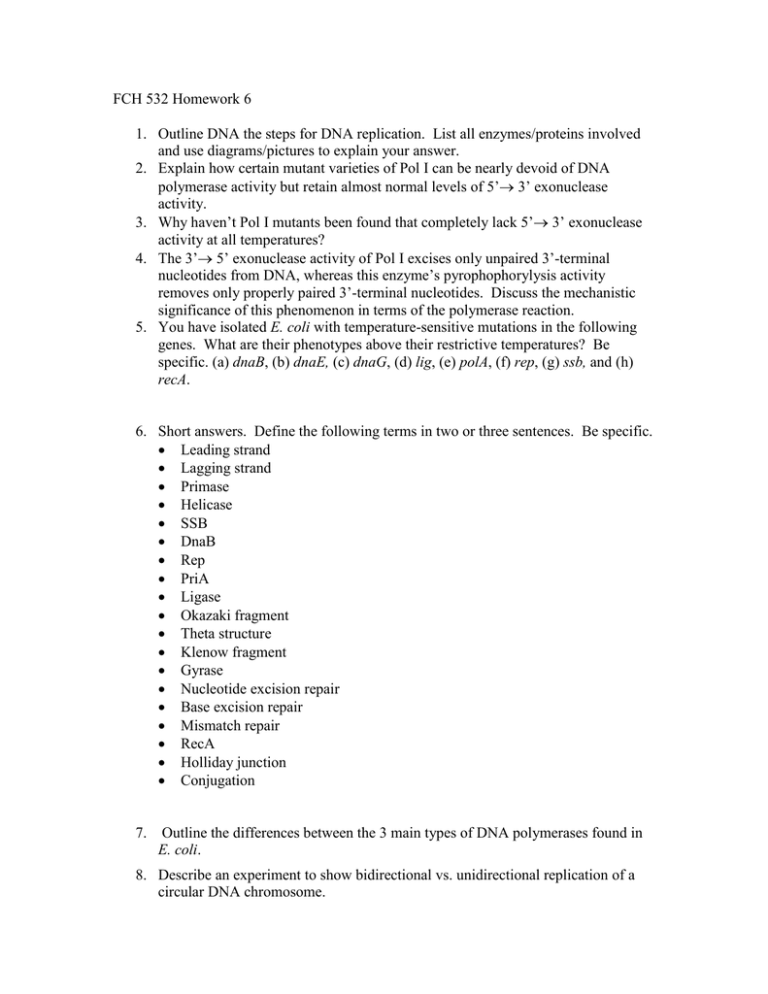
FCH 532 Homework 6 1. Outline DNA the steps for DNA replication. List all enzymes/proteins involved and use diagrams/pictures to explain your answer. 2. Explain how certain mutant varieties of Pol I can be nearly devoid of DNA polymerase activity but retain almost normal levels of 5’ 3’ exonuclease activity. 3. Why haven’t Pol I mutants been found that completely lack 5’ 3’ exonuclease activity at all temperatures? 4. The 3’ 5’ exonuclease activity of Pol I excises only unpaired 3’-terminal nucleotides from DNA, whereas this enzyme’s pyrophophorylysis activity removes only properly paired 3’-terminal nucleotides. Discuss the mechanistic significance of this phenomenon in terms of the polymerase reaction. 5. You have isolated E. coli with temperature-sensitive mutations in the following genes. What are their phenotypes above their restrictive temperatures? Be specific. (a) dnaB, (b) dnaE, (c) dnaG, (d) lig, (e) polA, (f) rep, (g) ssb, and (h) recA. 6. Short answers. Define the following terms in two or three sentences. Be specific. Leading strand Lagging strand Primase Helicase SSB DnaB Rep PriA Ligase Okazaki fragment Theta structure Klenow fragment Gyrase Nucleotide excision repair Base excision repair Mismatch repair RecA Holliday junction Conjugation 7. Outline the differences between the 3 main types of DNA polymerases found in E. coli. 8. Describe an experiment to show bidirectional vs. unidirectional replication of a circular DNA chromosome. 9. Outline mechanism for the repair of a thymine dimer in E. coli. Be specific 10. Draw the mechanism of the ligase enzyme. Show chemical structures. 11. It is generally assumed in general biochemistry that DNA replicates in the 5' 3' direction. Why do we think this is true? Propose an experiment to prove that 3' 5' replication does not occur. 12. Why is uracil so mutagenic in DNA? 13. What is the SOS response? What proteins are involved? 14. Why is the methylation of DNA to form O6-methylguanine mutagenic? 15. A replication fork encountering a single-strand lesion may either dissociate or leave a single-strand gap. The latter process is more likely to occur during lagging strand synthesis than during leading strand synthesis. Explain.





